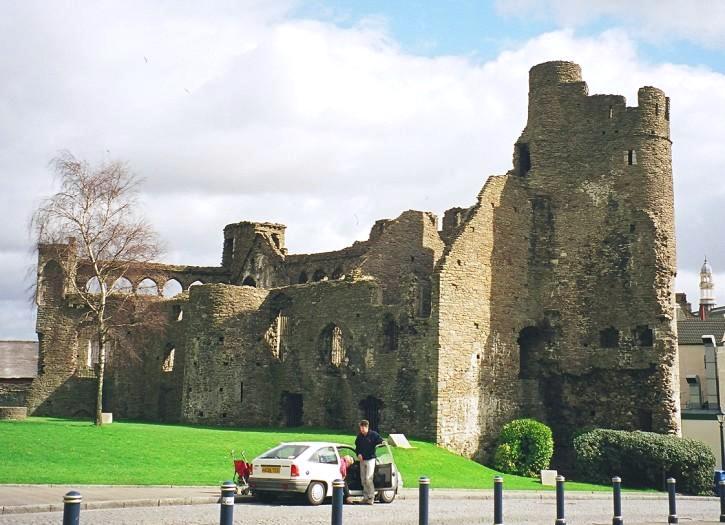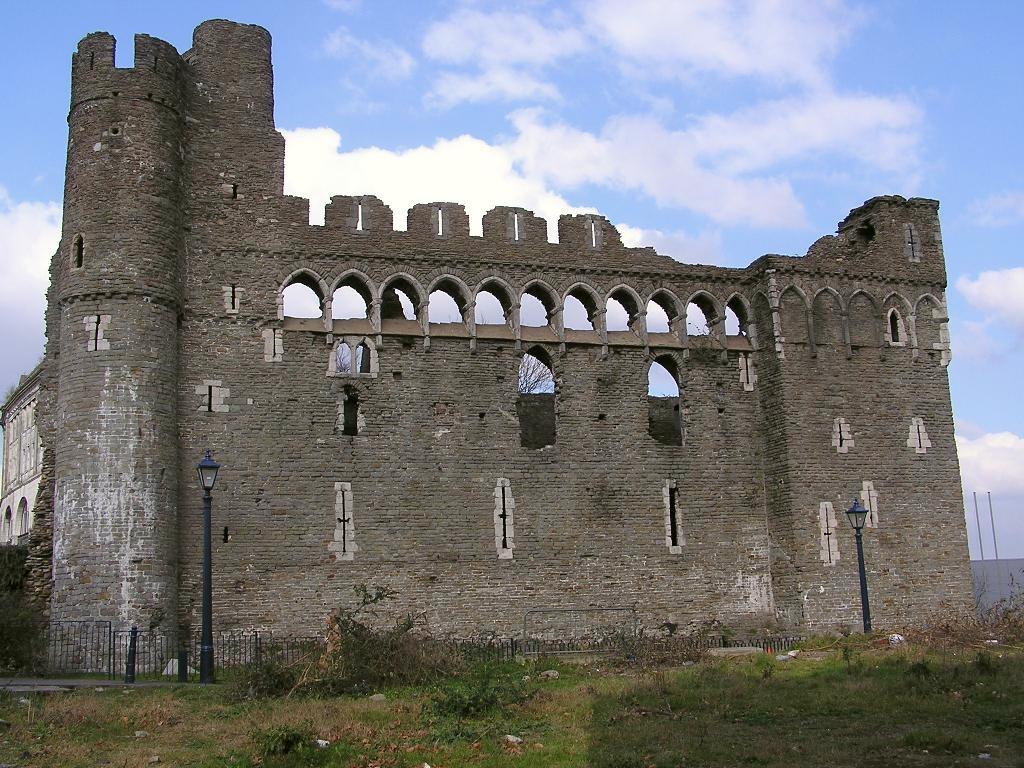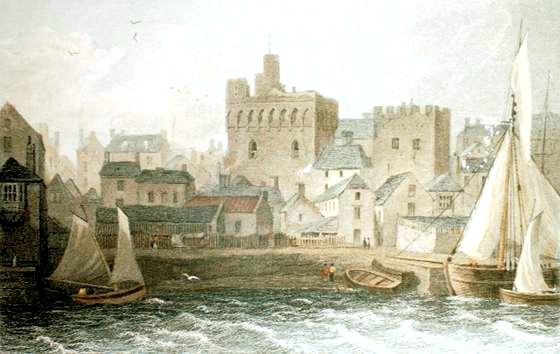Morgan 1914; Evans 1983
Swansea Castle is now so hemmed in by modern buildings and roads that it is hard to imagine its original surroundings, or indeed its original form. It stands on a clifftop, below which the river Tawe originally flowed, and its position was strategic: it commanded the lowest crossing of the river, the main east-west route in south Wales, and a good harbour. What is visible now is only a small part of the latest castle on the site, which in its heyday in the late 13th century stretched from Welcome Lane in the north to Caer Street in the south, and from the clifftop in the east, almost to Princess Way in the West.
Swansea Castle's history was a turbulent one: it suffered in many Welsh raids, and changed hands many times. It was a Norman castle first mentioned in 1116 as being attacked by the Welsh. It was established by Henry I's friend Henry de Beaumont, first earl of Warwick, as the seat of administration of the marcher lordship of Gower, which Henry bestowed on him in about 1106. This first castle was of motte and bailey type, and nothing of it remains above ground. The west side of its deep ditch has been excavated to the north of the present remains. It was rebuilt in stone on the same site, probably after being razed by the Welsh in 1217. Nothing remains above ground of this stage either, but the west side of the curtain wall has been found, together with a mural tower. To the south-west of this small castle, called the 'Old Castle', a large roughly rectangular outer bailey was walled in stone late in the 13th century.
The 'New Castle', of which the present-day remains were part, lay in its south-east corner, built on the site of an earlier graveyard. This castle dates from the late 13th to early 14th century, by which time Edward I's pacification of Wales had deprived it of any military importance. It continued as an administrative center, but at a reduced level. Its holders, then the de Braoses, preferred to live at Oystermouth Castle, and inevitably decline set in. Stripped of their usefulness, the various gates and towers of the bailey were sold off in the early 14th century.
The visible remains consist of the north and south blocks, probably the work of William de Braose III, connected by a short stretch of much-altered curtain wall. The curtain wall originally continued up Castle Bailey Street on the west, and west from the north block to enclose a roughly rectangular area, with an entrance on the west side. The well-preserved south block, which occupied most of the south side of the castle, is the most spectacular part, with its picturesque arcaded parapet on top of the outside walls. This was almost certainly the work of Henry de Gower, bishop of St. Davids (1328-47), and recalls similar features in his palaces at Lamphey and St. Davids itself. Swansea may thus have served as an episcopal palace for some time. This view has, however, recently been challenged. Some authorities now believe it is the work of the de Mowbray lord of Gower, using the bishop's masons, employed at that time elsewhere in Swansea. Two large windows on the south side are the windows of the first floor hall, and below them are the narrow windows of three barrel-vaulted chambers. In the angled wing to the east was a sub-basement with great battered walls, from which there was access to the river. On the first floor was a solar, or private chamber, reached by steps on the west side. At the west end of the block is a spectacular circular garderobe tower standing to its full height, and in the south-east angle is a small turret with an arrowslit.
The small rectangular tower to the north has been much altered in post-medieval times, but retains a few original features, such as cross arrowslits. On the ground floor are three vaulted chambers, with four rooms above them inserted in the late 18th century when the block was turned into a debtor's prison. It had probably been used as a prison for a long time before, and still has grim air. Other usable parts of the castle had very heterogeneous uses at the beginning of the 19th century - as a town hall, poor-house, a new market house, store cellars, a blacksmith's and other shops, a Roman Catholic chapel (in the hall) and a dovecote.

Home | Main Menu | Castle Index | Historical Essays | Related Essays | What's New | Links
Copyright © 2009 by Jeffrey L. Thomas






